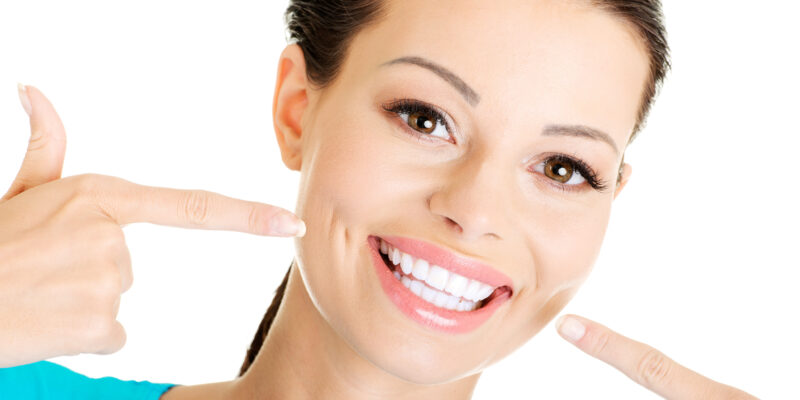Teeth Whitening at Home
The demand for having pearly white teeth among Americans has grown to an all-time high level. According to statistics, over 35.22 million Americans are expected to use at-home teeth whitening products in 2024. While numerous at-home teeth whitening products are available in the market, are these products effective and as good as professional teeth whitening? More importantly, are they safe? If you’re thinking of sparkling your teeth with at-home teeth whitening, these questions will likely come to mind.
But don’t worry; this blog will answer all your questions about teeth whitening at home. So, read on to learn everything you need to know about getting your teeth pearly white in the comfort of your home.
What is Teeth Whitening?
According to the American Dental Association 2, teeth whitening refers to a procedure in which adherent teeth stains are removed with different bleaching agents. If the whitening procedure is performed by a dentist in South Jersey, it is called professional teeth whitening. On the other hand, if someone prefers to whiten their teeth at home by using various over-the-counter whitening products, it is called at-home teeth whitening.
Dentist-supervised Teeth Whitening at Home: How Does it Work?
In addition to in-office teeth whitening, dentists sometimes can also provide you with whitening kids to remove your teeth stains at home. At-home teeth whitening is a simple procedure. First, your dentist in South Jersey will make impressions of your teeth. This is to prepare custom-made whitening trays for use at home. Your dentist will also give you a bleaching agent to remove your tooth stains.
Typically, at-home whitening formulas contain 2 – 30% carbamide or hydrogen peroxide. You will be asked to pour the whitening agent into the trays and wear them for a specified duration – usually 30 minutes to an hour.
When the bleaching agent comes in contact with your teeth, it penetrates beneath the surface and chemically dissolves the adherent stains. While a single sitting of teeth whitening at home may be sufficient to remove mild coffee, tobacco, or tea stains, you may have to perform this procedure multiple times to achieve the desired effect.
Over-the-counter Teeth Whitening Products
At-home whitening products are also available in markets. These whitening kits comprise a whitening solution and a set of stock whitening trays (for upper and lower jaws). Moreover, whitening toothpastes are also available in the markets. These pastes contain an abrasive that removes a thin layer of the stained outer enamel and whitens the teeth.
While all these products may seem like a cost-effective alternative to in-office or dentist-supervised whitening, not all these products are safe for use; some may do more harm than good. This is because some of these products may contain too high a concentration of the bleaching agent, which may cause long-term complications such as sensitivity and tooth decay. The American Dental Association recommends that only those over-the-counter whitening products be used that contain the seal of approval of the ADA.
Natural Teeth Whitening: Is it Effective and Safe?
These days, natural remedies for whitening teeth have become very popular. If you are thinking of whitening your teeth using natural remedies, you can try any of the following:
- Baking Soda – baking soda has abrasive properties 3. To use baking soda for whitening, mix one teaspoon with 2 teaspoons of water and brush your teeth. The abrasive effect of baking soda will remove the surface teeth stains caused by coffee, tea, tobacco, or red wine.
- Oil Pulling – this a method in which the mouth is washed with an oil – such as coconut, sunflower, or sesame oil – to cleanse the teeth and remove adherent stains. However, the American Dental Association considers oil pulling as conventional dentistry and states that “there are no reliable scientific studies to show that oil pulling reduces cavities, whitens teeth, or improves oral health and well-being” 4. Nevertheless, a research study has shown that oil pulling can be used as an adjunct to regular oral hygiene measures such as brushing and flossing 5.
- Hydrogen Peroxide – hydrogen peroxide has mild bleaching and can help remove teeth stains. Brushing with a mixture of baking soda and a mild solution of hydrogen peroxide can be effective in removing surface teeth stains for 1 – 2 minutes. However, care must be taken not to use a very high concentration as it may lead to tooth sensitivity.
- Fruits – some citrus fruits and daily staples such as apple cider, oranges, and pineapples, can also help whiten teeth. They do this by their mild acidic properties which dissolve a thin layer of the outer tooth enamel and dissolve the stains. However, the ADA maintains that while these fruits may be great for our health, their prolonged use for whitening may damage our teeth and cause sensitivity.

Best Practices for Keeping Our Teeth Sparkling White
While teeth whitening – whether in-office or at-home – is effective in whitening our teeth, it should never be considered a substitute for our regular oral hygiene maintenance. So, if you want to keep your teeth healthy and sparkling, you should do the following:
- Brush your teeth at least twice a day with fluoride toothpaste
- Floss daily as per your dentist in South Jersey’s recommendations
- Use a mouthwash if recommended by your dentist
- Visit your dentist near Philadelphia regularly for checkups and teeth cleanings
If you are looking for the best dentist near Philadelphia, Rapha Dental should be your first choice. We offer specialized dental services to our esteemed patients in a comfortable environment and at affordable rates. So, book an appointment with us today and let us give you a smile that you genuinely deserve.
References
- https://www.statista.com/statistics/287384/usage-of-tooth-whiteners-in-the-us-trend/#:~:text=Usage%20of%20tooth%20whiteners%20in%20the%20U.S.%202011%2D2024&text=The%20data%20has%20been%20calculated,to%2035.22%20million%20in%202024.
- https://www.mouthhealthy.org/all-topics-a-z/teeth-whitening
- https://pubmed.ncbi.nlm.nih.gov/30409952/
- https://www.mouthhealthy.org/all-topics-a-z/oil-pulling#:~:text=Is%20oil%20pulling%20good%20for,as%20a%20dental%20hygiene%20practice.
- https://www.sciencedirect.com/science/article/pii/S2225411016300281

